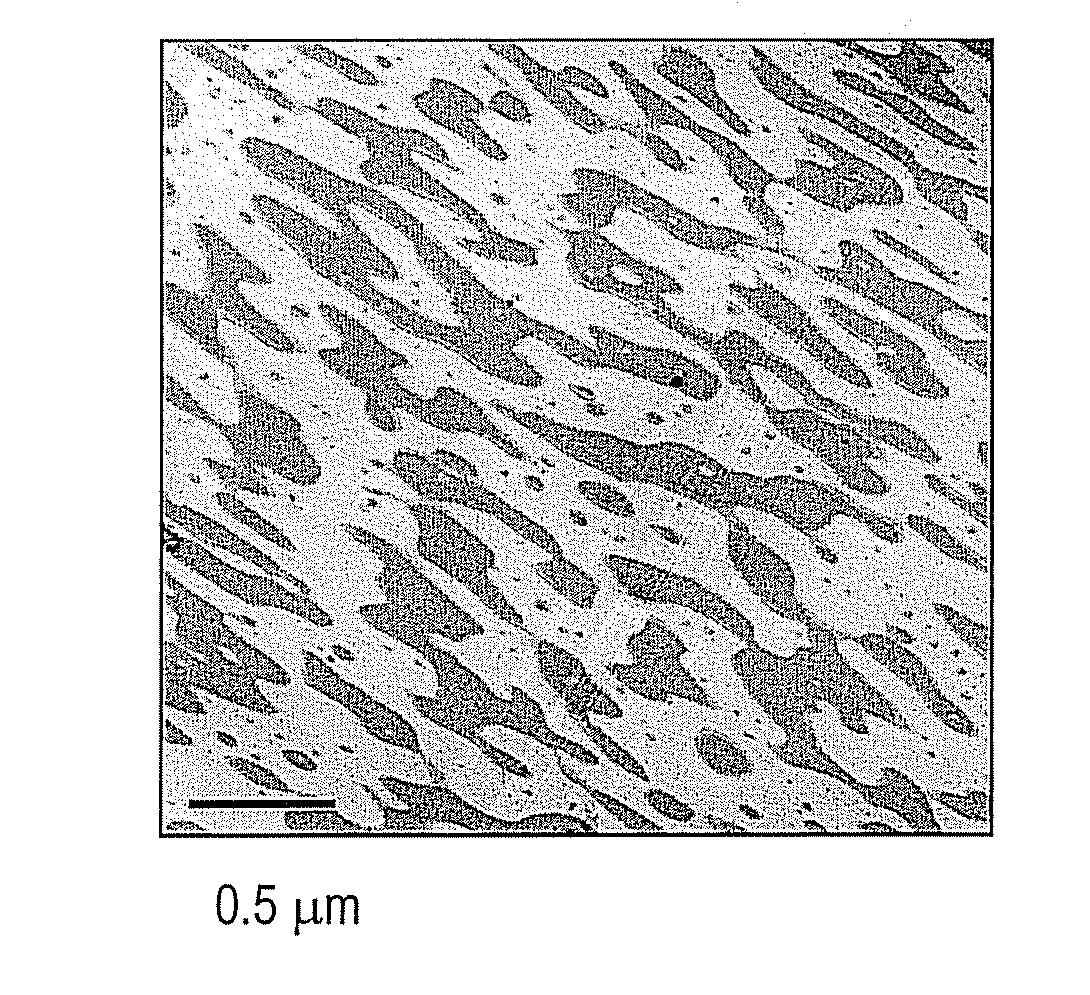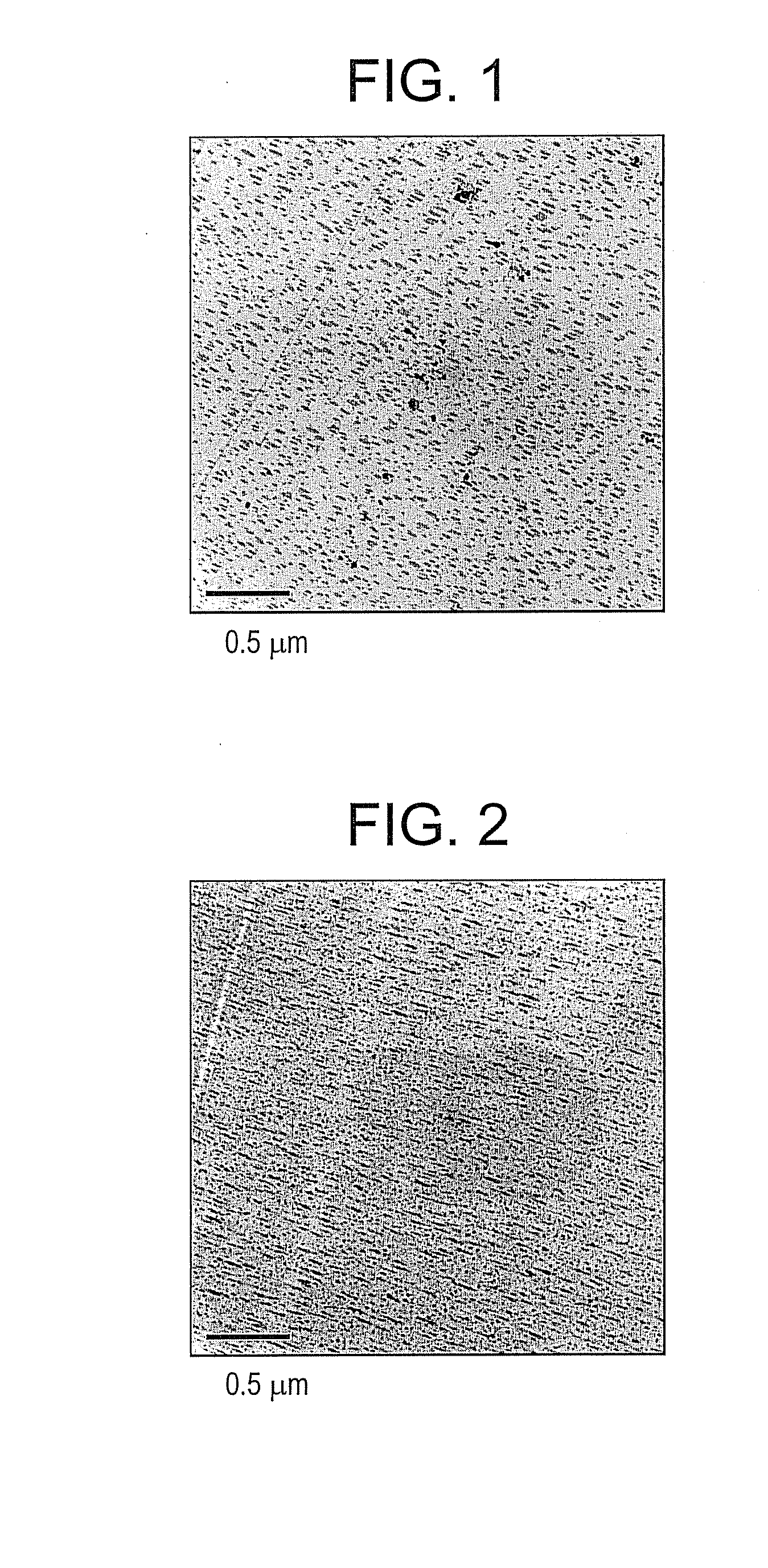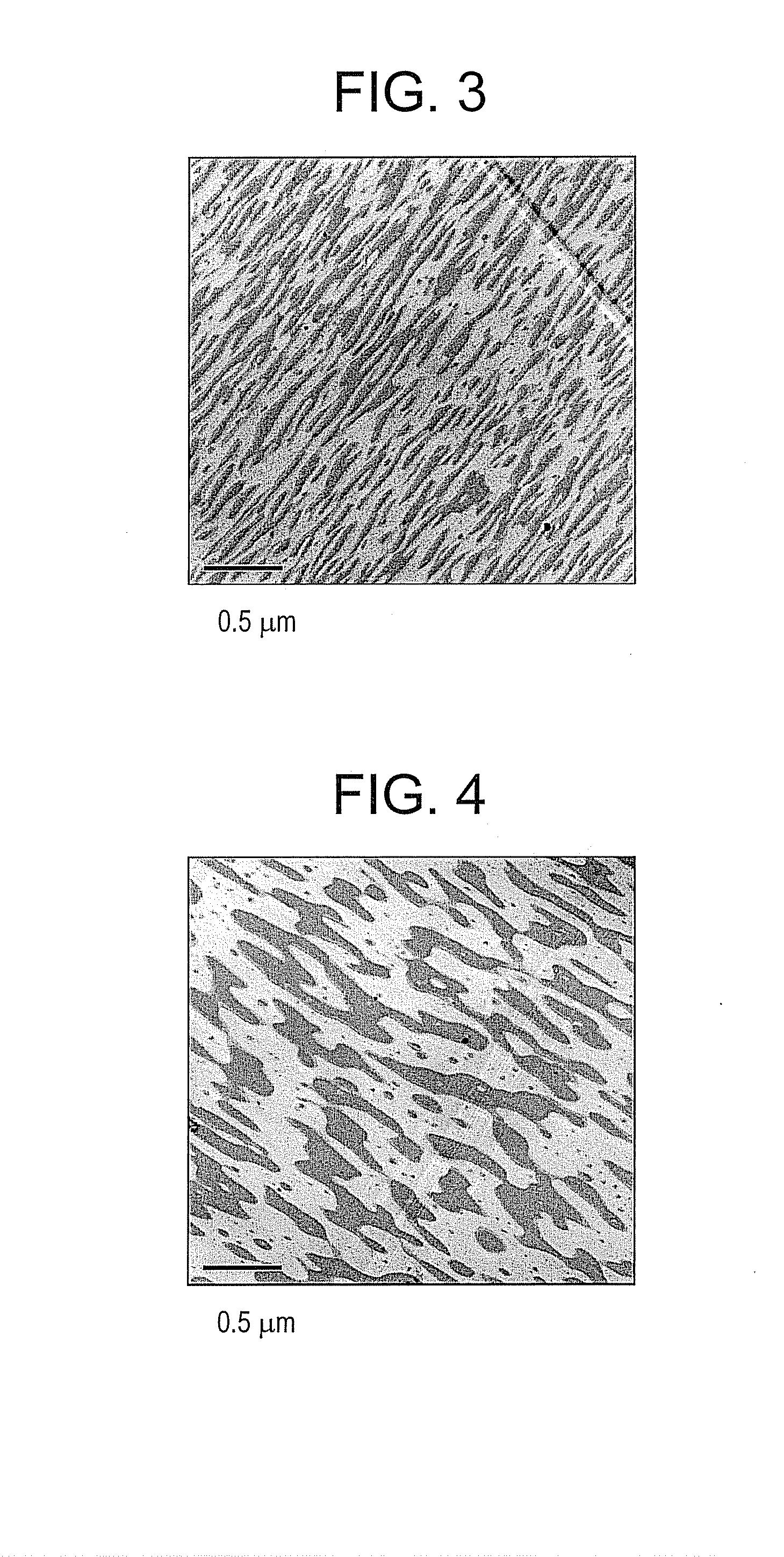Polyetherimide/polyphenylene ether sulfone blends
a technology which is applied in the field of polyetherimide and polyphenylene ether sulfone, can solve the problems of difficult to achieve a desired combination of properties, significant changes in another property, complex phase separated blends, etc., and achieves high impact strength, rigidity, and resistance to deformation.
- Summary
- Abstract
- Description
- Claims
- Application Information
AI Technical Summary
Benefits of technology
Problems solved by technology
Method used
Image
Examples
examples
[0068]The compositions are further described by the following non-limiting examples.
examples 1 , 2 and 3
Examples 1, 2 And 3; Comparative Examples A, B, C, and D
[0082]The purpose of Examples 1, 2 and 3 was to evaluate how different inventive blends performed as compared to PPSU and PEI, individually, as well as how inventive blends performed as compared to other blends of PEI and PPSU. More particularly, Table 1 shows molded properties of PPSU (control A), PEI (control B) as well as their blends.
TABLE 1ABCD123PEI01009795807060PPSU100035203040Tensile Strength at Yield10.7 (74) 15.3 (105) 15.2 (105) 15.1 (104) 14.5 (100) 14.2 (98) 13.7 (94) in Kpsi (MPa)Tensile Modulus in Kpsi 405 (2792) 547 (3771) 545 (3758) 545 (3758) 536 (3696) 530 (3654) 502 (3461)(MPa)Tensile Elongation at949371758389100Break (%)Multiaxial impact energy59 (80)35 (47)42 (57)37 (50)61 (83)64 (87)69 (94)at 73° F. (23° C.) in ft-lbs (J)Multiaxial impact energy62 (84)38 (51)33 (45)36 (49)72 (98)68 (92) 74 (100)at 32° F. (0° C.) in ft-lbs (J)HDT 264 psi (1.8 MPa) in199194195195196196197° C.Yellowness Index4381797977767...
examples 4 , 5
Examples 4, 5, and 6
[0090]The purpose of Examples 4, 5 and 6 was to show how blends of PPSU-PEI performed after being exposed to aging conditions. Table 4 shows blends of PPSU-PEI (Examples 4, 5 and 6) that were aged in a pressure cooker at 110° C. for 20 days using deionized water.
TABLE 4B456PEI100905010PPSU105090MVR 0 Day7.28.88.26.6MVR 20 Days11.111.08.16.8% Change542513
[0091]The results show that the melt volume rate (MVR) measured at 337° C. and reported in cm3 / 10 minutes showed a large increase for the PEI control (B) indicating degradation of the PEI polymer. The PEI-PPSU blends of Examples 4, 5 and 6 showed much smaller change of MVR indicating better stability when exposed to 110° C. steam. Even a low level (10 weight percent) of PPSU gave protection against MVR loss.
PUM
| Property | Measurement | Unit |
|---|---|---|
| Temperature | aaaaa | aaaaa |
| Temperature | aaaaa | aaaaa |
| Temperature | aaaaa | aaaaa |
Abstract
Description
Claims
Application Information
 Login to View More
Login to View More - R&D
- Intellectual Property
- Life Sciences
- Materials
- Tech Scout
- Unparalleled Data Quality
- Higher Quality Content
- 60% Fewer Hallucinations
Browse by: Latest US Patents, China's latest patents, Technical Efficacy Thesaurus, Application Domain, Technology Topic, Popular Technical Reports.
© 2025 PatSnap. All rights reserved.Legal|Privacy policy|Modern Slavery Act Transparency Statement|Sitemap|About US| Contact US: help@patsnap.com



